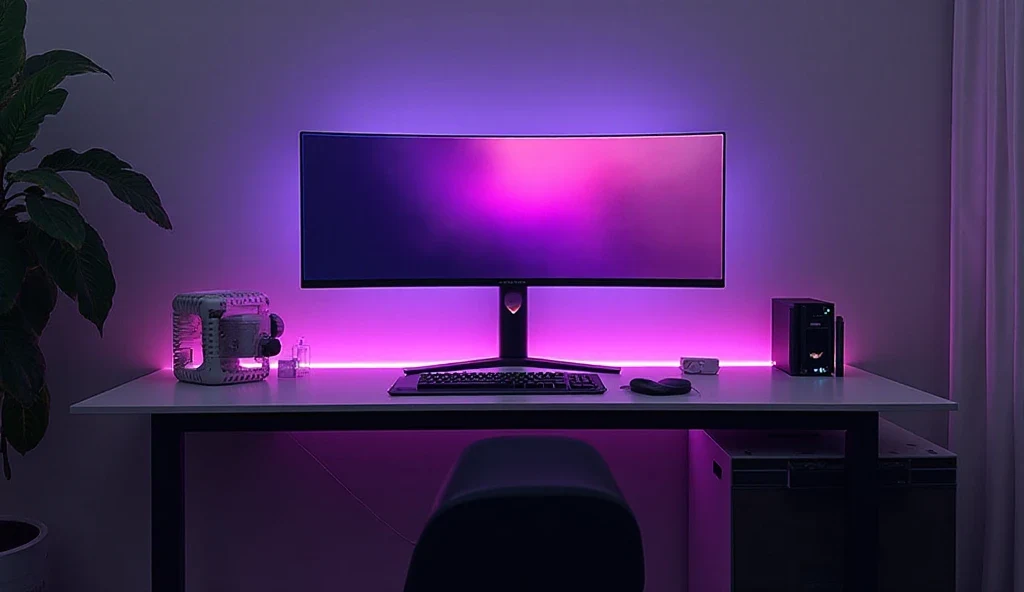Let’s be real—your current gaming setup probably looks like a electronics graveyard. Cables everywhere, that one monitor that’s slightly crooked but you’ve gotten used to it, and a desk surface that hasn’t been actually visible in months because it’s buried under energy drink cans, old takeout containers, and random peripherals you bought during that one late-night Amazon spiral.
Your gaming desk setup isn’t just about having a place to play—it’s your command center for everything you do on a computer. Work calls, creative projects, late-night gaming sessions, maybe even streaming if you’re into that. When this space works well, everything else flows better. When it’s chaos, everything feels harder than it should be.
The difference between setups that actually function long-term versus ones that look good for about a week comes down to understanding what you actually need versus what just looks cool on Instagram. Some of the most impressive-looking battlestations are completely impractical for daily use, while the best functional setups might not photograph as well but make every hour you spend there more enjoyable.
Ready to create a gaming space that works for your real life instead of just your fantasy life? Let’s talk about setups that actually deliver on both performance and aesthetics.
Stop Making These Expensive Mistakes
Before we dive into the cool stuff, let’s address the basic reality checks that separate gaming setups that work from expensive disasters that look good in photos but suck to actually use.
Cable Management Isn’t Optional – Those Instagram setups with zero visible cables aren’t just for show—tangled cables cause real problems. They create dust traps, make troubleshooting impossible, and honestly just make you feel bad about your space every time you look at it.
Ergonomics Matter More Than RGB – All the cool lighting in the world won’t help if you’re destroying your neck and back with terrible monitor positioning and a chair that belongs in a trash can. Your body will remind you of these shortcuts whether you want it to or not.
Plan for Real Use, Not Just Gaming – If you also work from this desk, take video calls, or do creative projects, your setup needs to handle all of that. Gaming-only optimization might leave you scrambling when you need to look professional on a work call.
Future-Proofing Beats Impulse Buying – That massive monitor might seem awesome until you realize you don’t have desk space for anything else. Think about how your needs might evolve rather than just optimizing for right now.
Design for Your Actual Gaming Life
The best gaming setups are designed around how you actually use your space, not how you think you should use it or how it looks in other people’s photos.
Lighting Strategy That Works – Good lighting isn’t just about looking cool. You need enough ambient light to prevent eye strain, task lighting for reading or working, and yes, some accent lighting for atmosphere. But it should all work together rather than competing.
Storage That Actually Gets Used – Open shelves look clean in photos but collect dust in real life. Closed storage, cable management solutions, and designated spots for controllers, headsets, and other gear keep things functional long-term.
Multi-Purpose Flexibility – Your gaming space probably needs to handle work calls, creative projects, and maybe streaming. Plan for quick transitions between different uses rather than having to completely reconfigure every time.
Maintenance Reality – Choose materials and configurations that work with your actual cleaning habits. If you’re not someone who dusts weekly, maybe skip the open glass shelving that shows every fingerprint.
12 Gaming Desk Setup Ideas That Actually Work
1. Minimalist Command Center
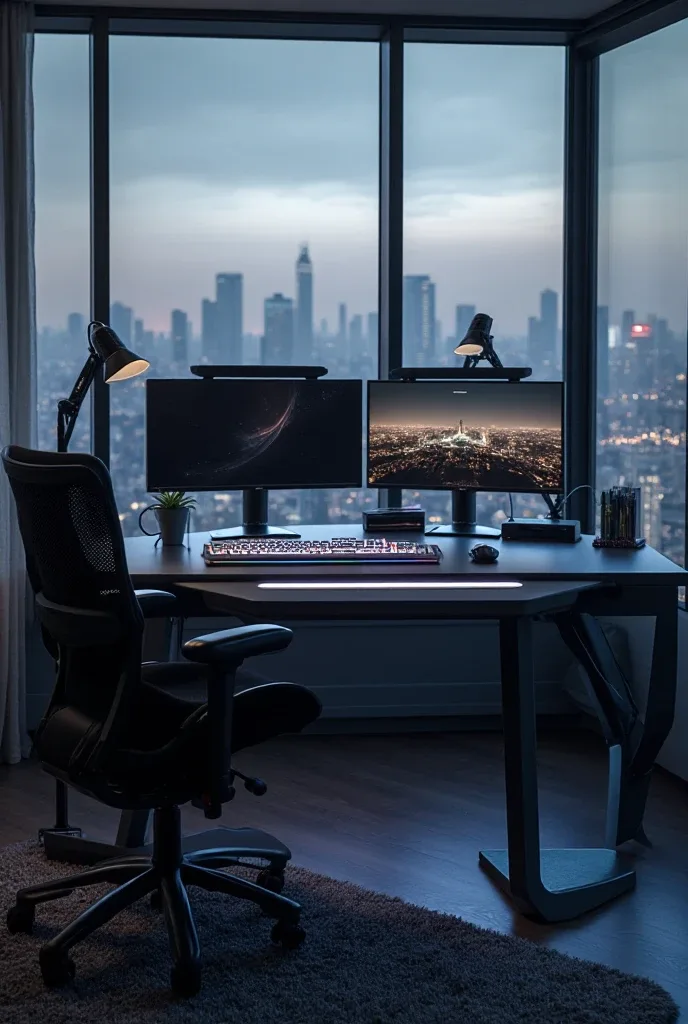
Sometimes the most powerful setup is the cleanest one. Matte black L-shaped desk gives you space for dual monitors without visual clutter, while hidden cable management keeps everything looking intentional and professional.
The key is choosing quality over quantity—fewer elements but each one carefully selected and properly positioned. RGB lighting kept subtle rather than overwhelming, ergonomic chair that works for both gaming marathons and work calls.
This approach works particularly well if you use your setup for work and gaming. Clean aesthetics translate well to video calls while still providing serious gaming performance when you need it.
2. Natural Wood Warmth
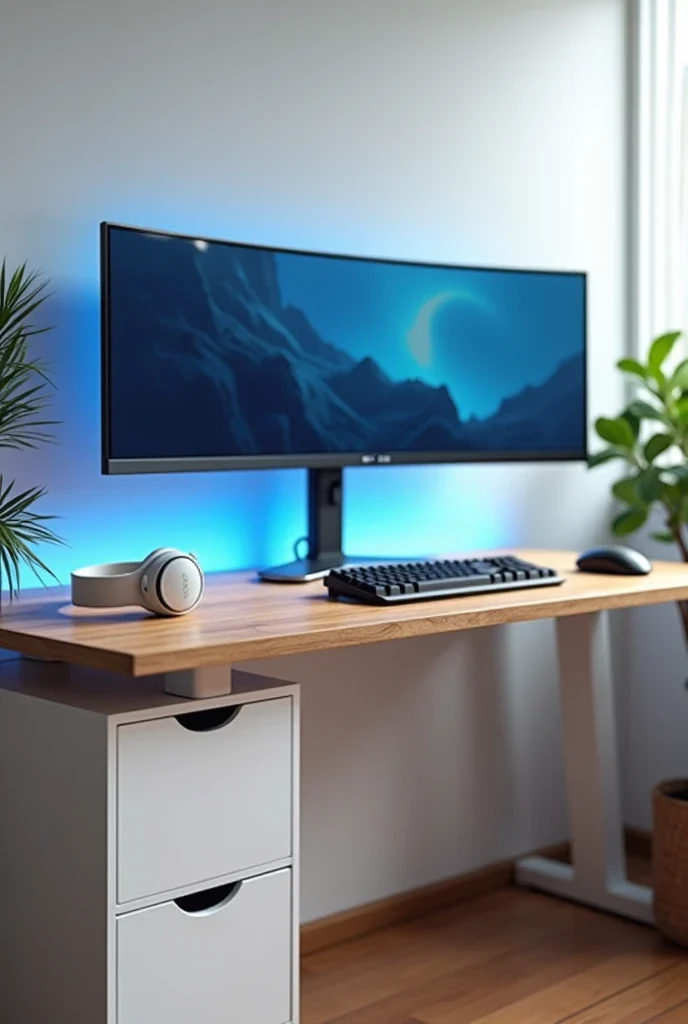
Combining natural oak wood with white accents creates this sophisticated look that doesn’t scream “gaming setup” to anyone who walks by. Single ultrawide monitor reduces clutter while providing ample screen space for both gaming and productivity.
The wood adds warmth and sophistication that pure black or white setups sometimes lack. Add a small plant for life and freshness—it’s surprisingly effective for making tech-heavy spaces feel more balanced and welcoming.
This style works well in shared spaces where your gaming setup needs to blend with existing decor rather than dominating the room.
3. Dual Monitor Productivity Beast
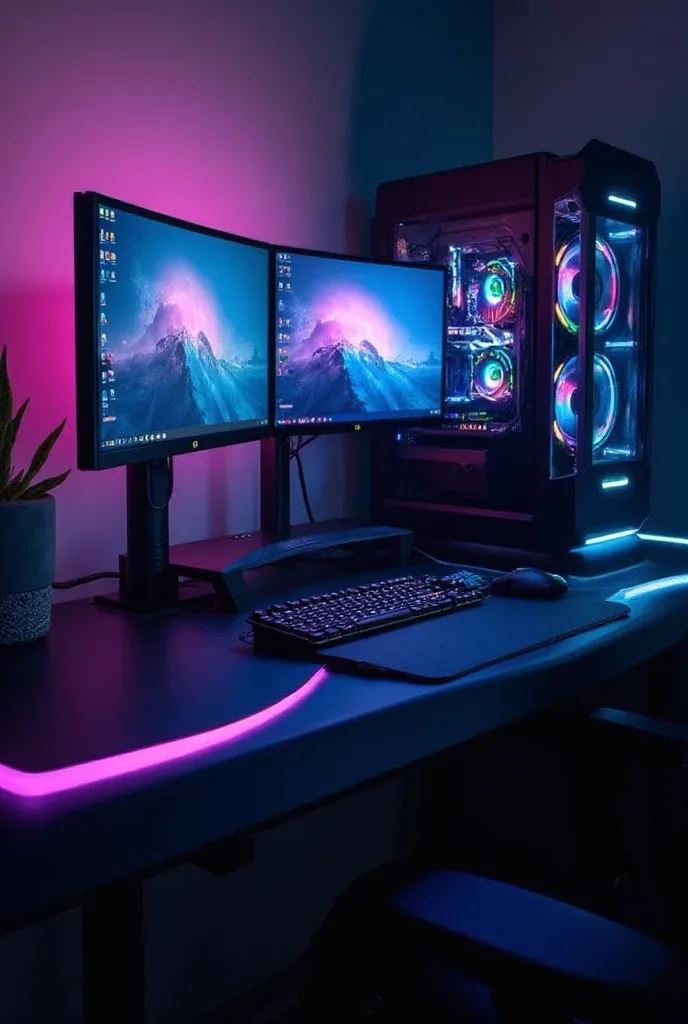
Two curved monitors mounted properly provide incredible screen real estate for both gaming and multitasking. RGB lighting along desk edges adds atmosphere without being distracting during focused work or competitive gaming.
The key is getting monitor positioning right—they should curve around your natural field of vision rather than requiring constant head turning. Cable management becomes crucial with multiple displays and peripherals.
This setup excels for anyone who needs serious multitasking capability—gaming while streaming, work with multiple applications open, creative projects requiring multiple windows.
4. Small Space Optimization
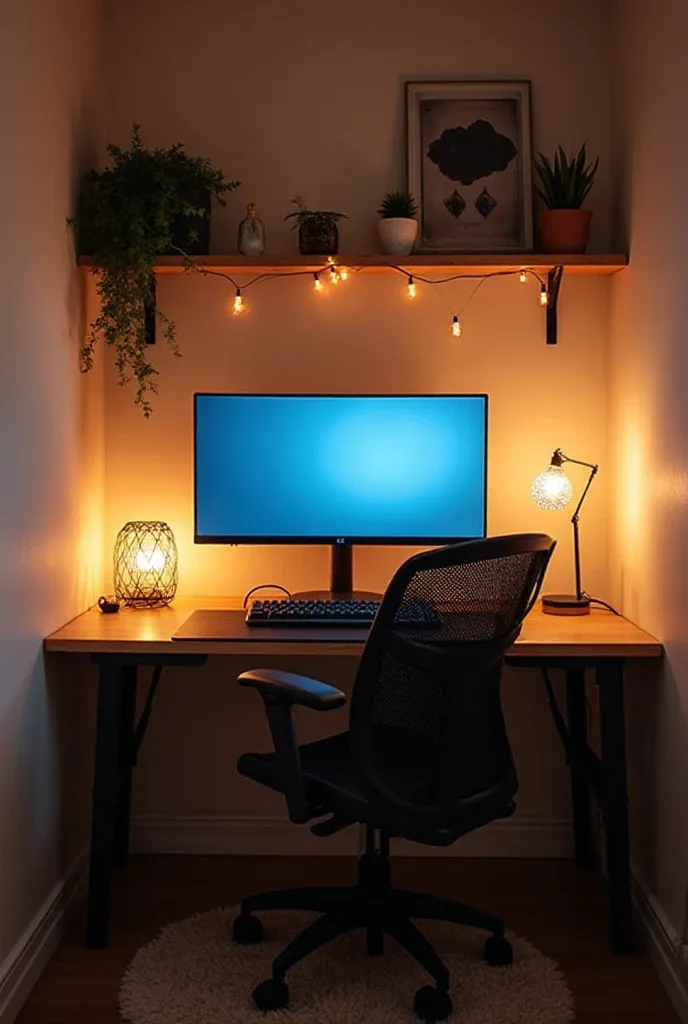
Not everyone has unlimited space for elaborate battlestations. Compact setups can be just as functional and attractive when designed thoughtfully. Wall-mounted shelves provide storage without eating floor space.
String lights and warm lighting create atmosphere that prevents small spaces from feeling cramped or clinical. Choose peripherals that serve multiple purposes and can be easily stored when not in use.
This approach proves that effective gaming setups are more about smart design than available space. Every element needs to earn its place through function and aesthetics.
5. Aesthetic Balance
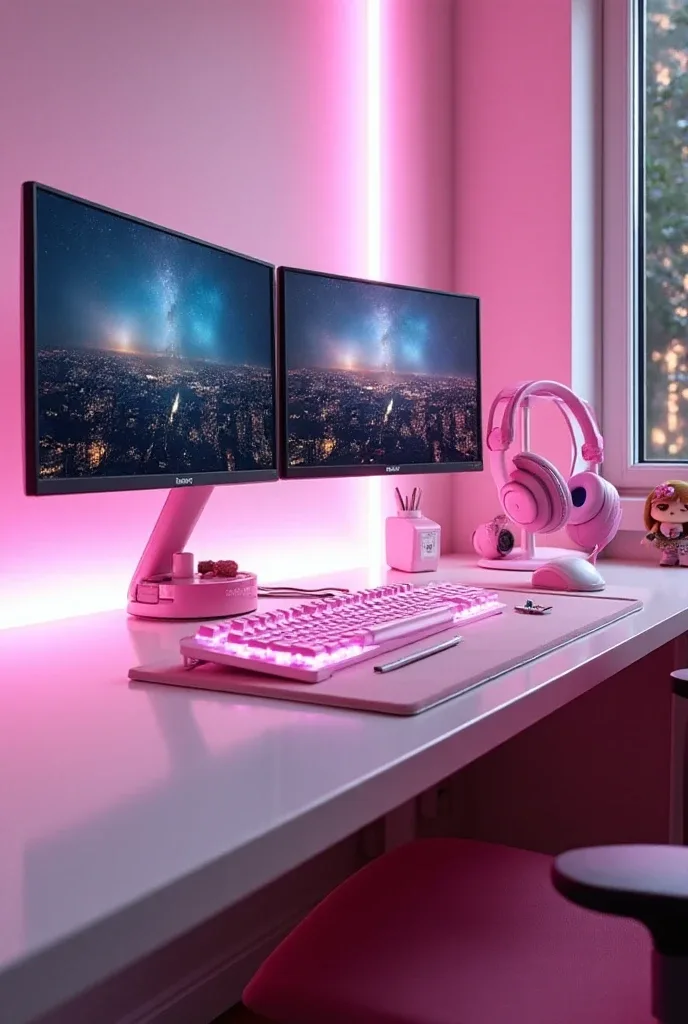
White and pink color schemes create sophisticated setups that feel personal without being overwhelming. The key is balancing bold accent colors with plenty of neutral space for visual breathing room.
Quality peripherals in coordinating colors maintain the aesthetic while providing serious performance. Small decorative elements like figurines or artwork make the space feel personal and curated.
This style works particularly well for content creators who want their setup to be visually interesting on camera while still being highly functional for gaming and streaming.
6. Immersive Gaming Theater
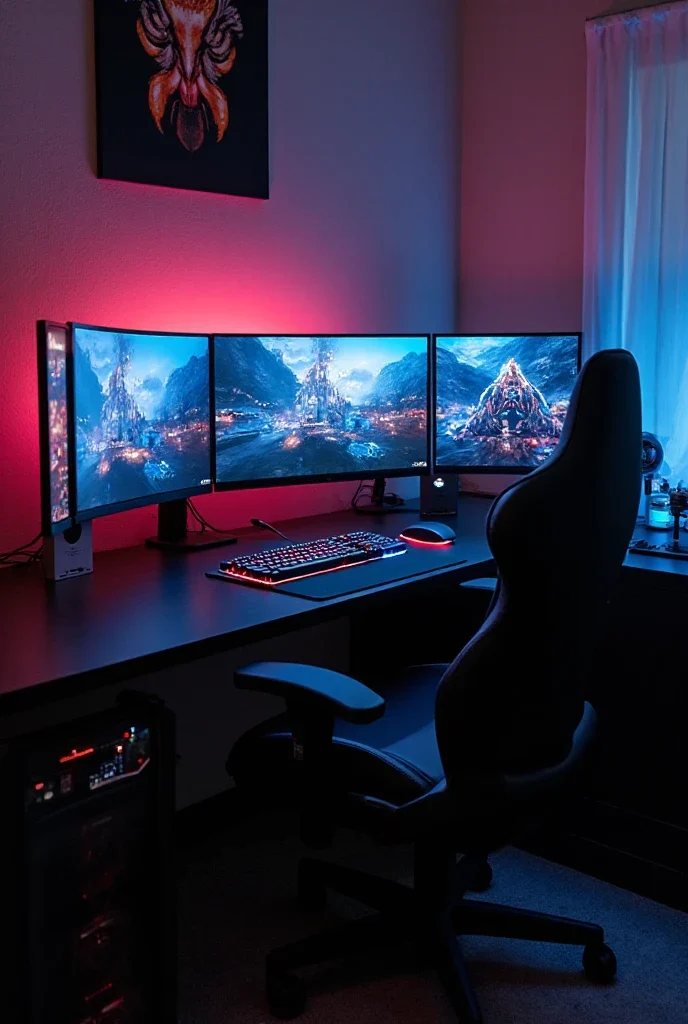
Triple monitor setups require serious commitment and space, but when done right they create unparalleled gaming experiences. Proper mounting and positioning are crucial—poorly aligned monitors create more problems than benefits.
Racing-style chairs work well for gaming but consider versatility if you use this space for other activities. Wall art and LED panels help balance the tech-heavy aesthetic with personal touches.
This setup type works best for dedicated gaming spaces where immersion is the primary goal and the setup doesn’t need to serve multiple functions.
7. Floating Minimalism

Wall-mounted desks create clean lines and make floor space feel larger while providing serious functionality. Hidden cable management is essential—visible wires ruin the floating effect completely.
Purple backlighting adds drama without being distracting during use. Wireless peripherals maintain the clean aesthetic while providing flexibility for different activities and configurations.
This modern approach works well in small spaces or contemporary interiors where the setup needs to feel integrated rather than imposed.
8. Corner Space Mastery
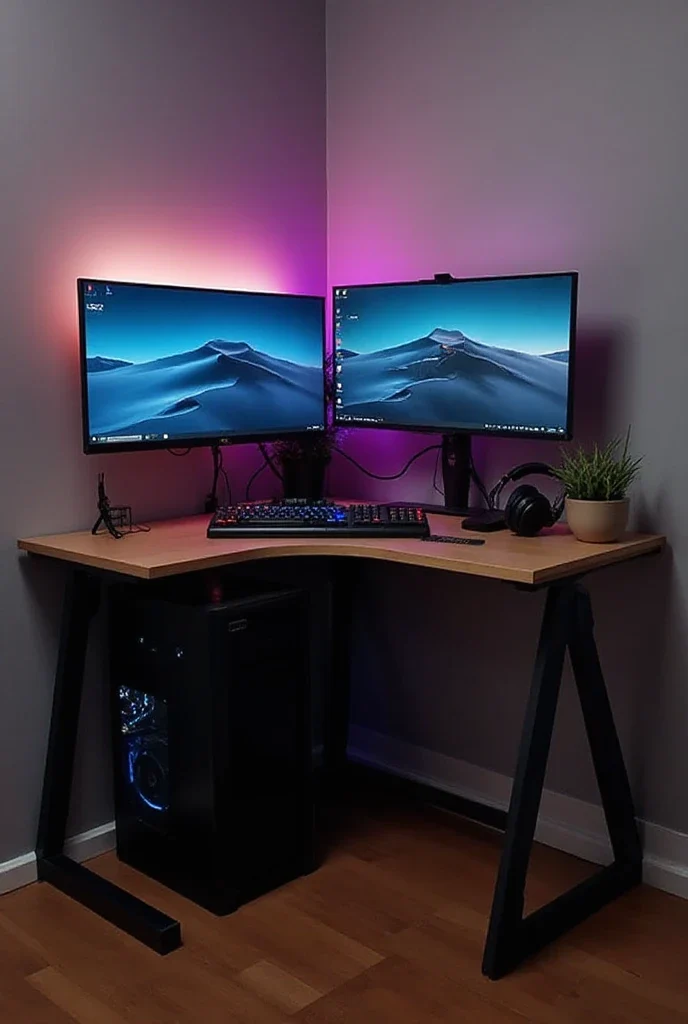
L-shaped corner configurations maximize limited space while providing ample work surface. Dual monitors angled properly create immersive gaming while maintaining functionality for productivity tasks.
Wooden surfaces add warmth to tech-heavy setups while black hardware keeps things looking contemporary and cohesive. Strategic plant placement softens hard edges without interfering with functionality.
This approach works particularly well in bedrooms or multi-purpose spaces where the gaming setup needs to coexist with other furniture and activities.
9. Clean Modern Sophistication
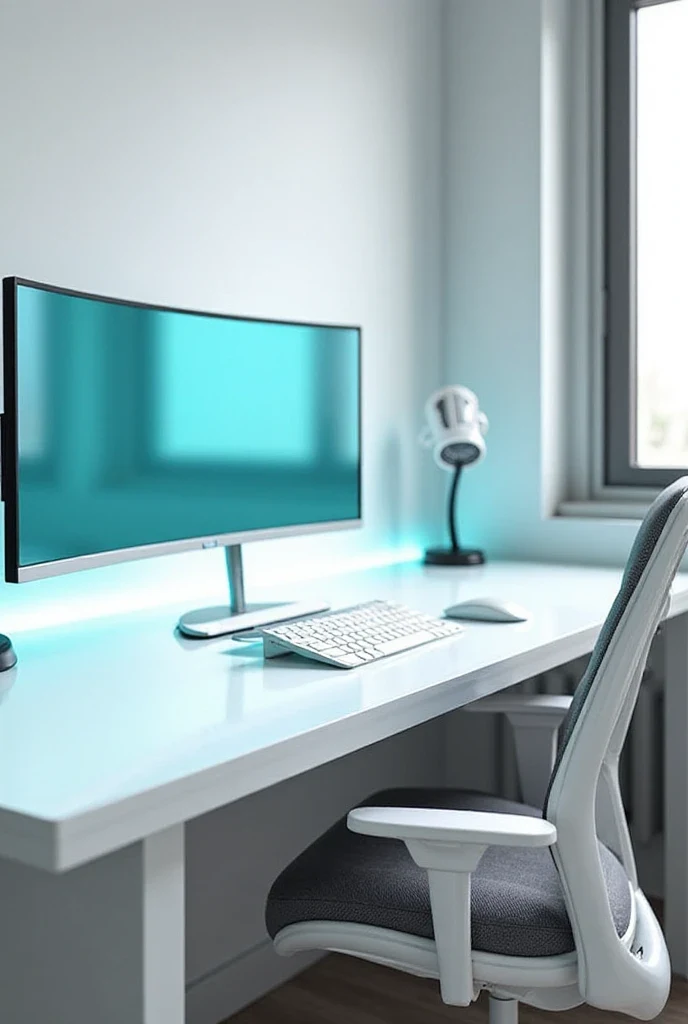
All-white setups create sophisticated looks that work well in contemporary interiors while providing serious gaming performance. The challenge is maintaining cleanliness—white shows everything.
Curved monitors provide immersive gaming while looking sleek and modern. Ergonomic seating in complementary colors maintains the aesthetic while providing comfort for extended use.
This style works best for people who actually maintain clean, organized spaces and want their gaming setup to feel integrated with modern interior design.
10. Content Creator Ready
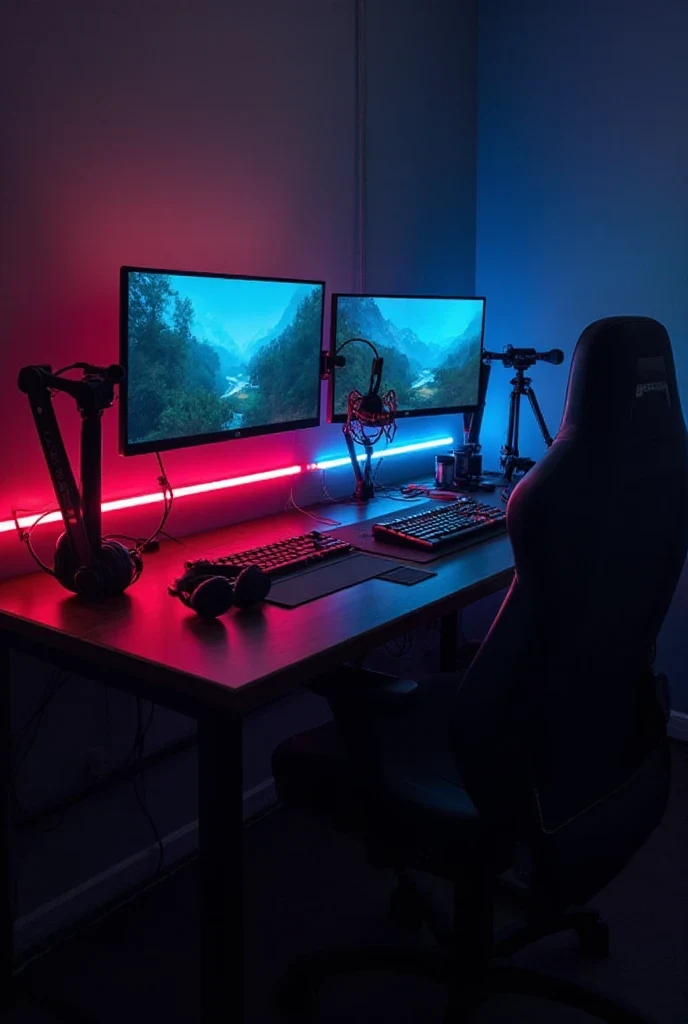
Streaming setups require additional considerations—multiple monitors for managing chat and streaming software, quality microphones positioned for optimal audio, lighting that works on camera.
RGB lighting becomes functional rather than just aesthetic—it provides background illumination for streaming while creating atmosphere for gaming. Cable management becomes even more crucial with additional equipment.
This approach works for anyone serious about content creation or streaming, where the setup needs to perform well both for gaming and for being on camera.
11. Sophisticated Warmth
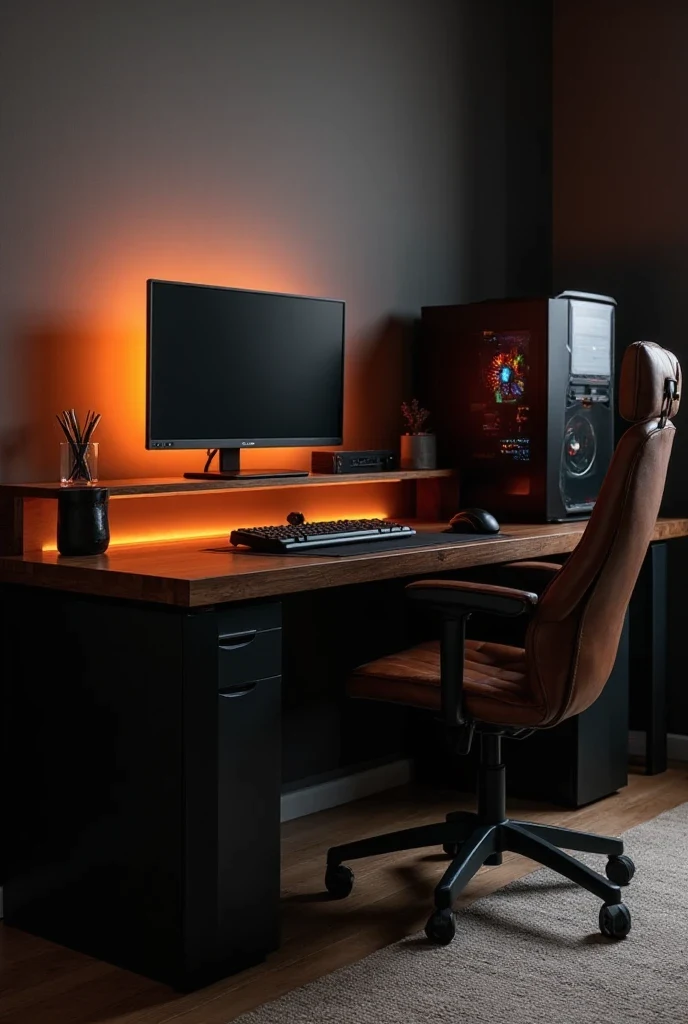
Dark walnut wood creates rich, sophisticated aesthetics that feel more furniture than gaming gear. Warm amber lighting adds coziness while maintaining good visibility for gaming and work.
Leather seating elevates the entire setup from “gaming corner” to “sophisticated workspace that happens to be great for gaming.” Quality materials age well and maintain their appeal long-term.
This style works well in shared living spaces or home offices where the gaming capability needs to coexist with sophisticated interior design.
12. Ultra-Clean Single Focus

Sometimes one really good monitor beats multiple mediocre ones. Single monitor setups force focus while reducing visual clutter and simplifying cable management.
Wireless peripherals and hidden cable management create clean lines that work well in any interior style. Under-monitor lighting provides atmosphere without being distracting during focused gaming or work.
This minimalist approach works well for people who value simplicity and focus over maximum screen real estate. It’s also easier to maintain and modify as needs change.
Actually Build Something You’ll Use
Here’s the reality check—you can research gaming setups forever, but your current chaos won’t improve until you actually commit to creating something better. The perfect setup that exists only in your saved photos doesn’t make your daily gaming or work experience any better.
Start with the basics that affect your daily experience: proper monitor positioning, decent seating, and cable management that actually works. You can always upgrade components later, but having a functional foundation immediately improves every hour you spend at your desk.
When you find yourself looking forward to sitting down at your setup instead of just tolerating whatever chaos is currently happening there, you’ll understand why getting this stuff right actually matters. Good tools make everything more enjoyable—gaming, work, creative projects, everything.

